Becoming Track Town: How Eugene's history and culture secured the World Athletics Championships
- Oops!Something went wrong.Please try again later.
Vin Lananna was 30 when he made his first visit to Hayward Field.
Then the coach at Dartmouth College in New Hampshire, Lananna had an athlete qualify for the 1984 NCAA Outdoor Track & Field Championships in Eugene, so out West they came.
On opening night of the meet, Lananna settled into a bench seat in the old East Grandstand to watch budding star Joaquim Cruz run the 800 meters, the first race of an eventual 800-1,500 double victory for the Oregon sophomore.
The stands were packed and the crowd was loud when the voice of famed Hayward Field announcer Wendy Ray boomed through the speakers with a request.
“He said there were about 1,000 people that could not get into Hayward Field and asked if everyone would just scrunch over a little bit so we could let them in,” Lananna remembered.
Right on cue, everyone scrunched over.
Lananna, whose career path would later bring him back to Eugene and the University of Oregon, was in awe of the whole environment — a stadium packed with a fierce hometown crowd.
“I was like, ‘Where am I?’” he said.
Track Town, USA, of course.
Eugene, a small college town with a counterculture reputation, is nestled in a lush valley in the Pacific Northwest where for seven-plus decades the sport of track and field has been engrained in its identity and embraced by its community like nowhere else in the United States.
Its track and field legacy — established by storied runners, maintained by a one-of-a-kind corporate connection, perpetuated by rabid fans and magnetic to elite athletes — has seeped into Eugene's off-the-track culture, giving even everyday runners an opportunity to be a part of the history.
And this month, Track Town is going global.
Starting Friday, about 2,000 athletes from 200 countries will descend upon Hayward Field for the 10-day World Athletics Championships meet. This is the first time the event has been held in the United States in its 39-year history.
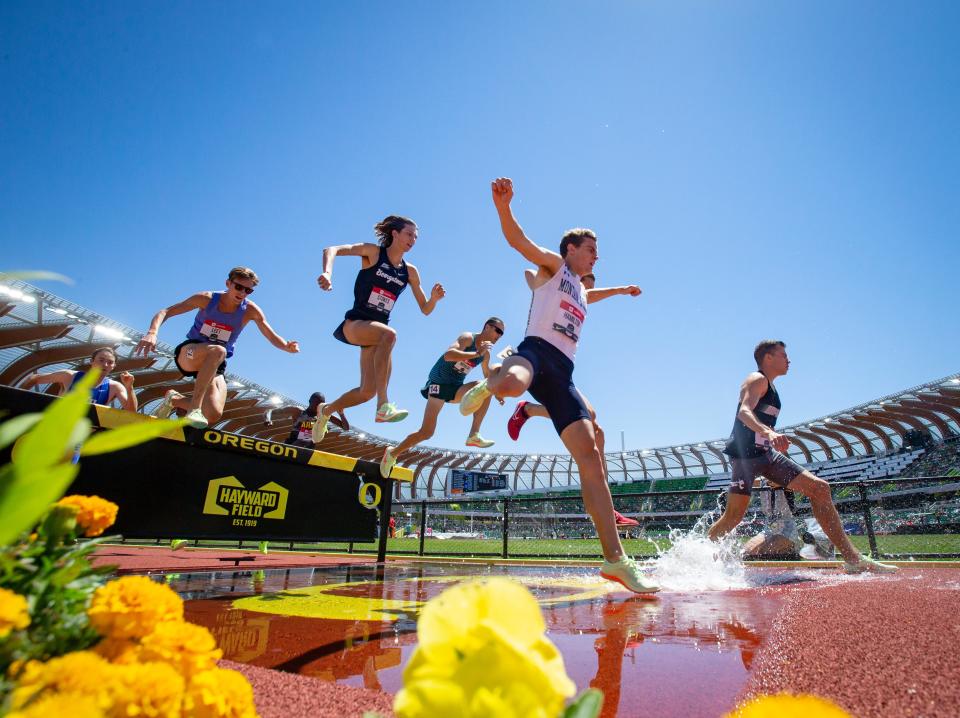
Forged by pioneers like former Oregon Ducks coach Bill Bowerman and former UO runner Phil Knight — whose handshake agreement nearly 60 years ago led to the birth of billion-dollar shoe and apparel giant Nike — celebrated through charismatic icons like Steve Prefontaine and taken to new heights by visionaries like Lananna, the mythology of Track Town has many layers.
Some of its tales are more renowned than others (Have you heard the one about Mrs. Bowerman’s waffle iron?), but at its core is a fanbase that proudly supports track and field and prefers to show that support in one venue above all others.
At the heart of Track Town
Hayward Field, the spiritual home to the domestic track and field community and, specifically, to the storied Oregon track and field team since 1921, was torn down in 2018 and rebuilt into a $300 million, state-of-the-art facility that reopened in 2021.
Through the years it has hosted more major meets than any other facility in the United States, including 18 NCAA Outdoor Track & Field Championships, seven U.S. Olympic Track & Field Trials, eight USATF Outdoor Championships, the 2014 World Junior Championships and the annual Prefontaine Classic, which is the only World Athletics Diamond League meet held in the United States.
Want more stories like this? Subscribe to get unlimited access and support local journalism.
“When I think of Track Town, I think of events, mostly at Hayward Field,” said Ian Dobson, the Eugene Marathon race director and a coach at both Sheldon High School and for the professional training group Team Run Eugene.
Dobson was a high school star in track and cross-country growing up in southern Oregon and went on to a standout career at Stanford. He made the U.S. Olympic team in 2008 in the 5,000 meters.
“If I rewind 25 years and I’m in Klamath Falls, super into running, my friends are super into running, coming up to Hayward Field for the Pre Classic, or the Track City Classic, or the high school state meet, that felt like Track Town,” Dobson, 40, said.
“I didn’t know anything about the broader running community, but that was very important and special. To walk into Hayward Field and see this thing that you do is not fringe anymore, it was super validating … and that all still very much exists, it’s not just a walk down memory lane.”
Lananna is a big reason why.
When he was hired as Oregon’s coach in 2005, Track Town was in a dry spell, having hosted the NCAA Outdoor Championships only three times over the previous 21 years, and the USATF Outdoor Championships three times in 13 years.
Lananna set out to revive Hayward Field as the beating heart of track and field in the United States and reinvigorate the local fan base.
“When you’ve seen something exist, you figure you can replicate it,” said Lananna, who has been the director of track and field and cross-country at Virginia since 2019.
The first major meet Lananna helped land was the Olympic Trials, which hadn’t been held in Eugene since 1980 but now hasn’t been held anywhere else since 2008.
Hayward Field has also hosted the USATF outdoor meet four times since 2009, and nine of the last 12 NCAA championship meets.
The crown jewel, however, is the world championship meet — World Athletics Championships Oregon22 — which was supposed to take place last summer but was postponed when the COVID-19 pandemic caused the 2020 Summer Olympics in Tokyo to move to 2021.
“If there’s any community that deserves to host that first-ever world championship in the United States, it’s Track Town, USA,” Lananna said. “When I came in 2005, that’s the vision that I had.”
Lananna said he tried to follow the promotional model created by Bowerman during his years at Oregon. Bowerman, who coached the Ducks from 1948 to 1972, had a knack for building community engagement and support for his program.
"He'd walk down Main Street and get people to buy a bunch of tickets to the track meets," said Tom Jordan, the recently retired longtime meet director for the Pre Classic and a member of the Oregon Track Club board of directors. "Oregon was good at that. Oregon was winning championships as early as 1964. Everybody loves a winner. Everybody loves to be part of something that is bigger than themselves, and that for Eugene was track and field."
Lananna won six national titles before walking away from coaching in 2012 and continued to apply that community building by focusing on his other duties at the time as an associate athletic director at Oregon and president of local organizing committee TrackTown USA.
Build the legacy's foundation
The modern era of track and field in Eugene goes back almost 120 years to an Oregon program first coached to national prominence from 1904 to 1947 by Bill Hayward, the namesake of the Ducks’ stadium and U.S. track and field coach for six Olympics.
Hayward’s teams produced multiple world and American record holders. Among his proteges was Bowerman, who returned in 1948 to his alma mater where he spent 24 years coaching the Ducks and laying the foundation for what would become Track Town.
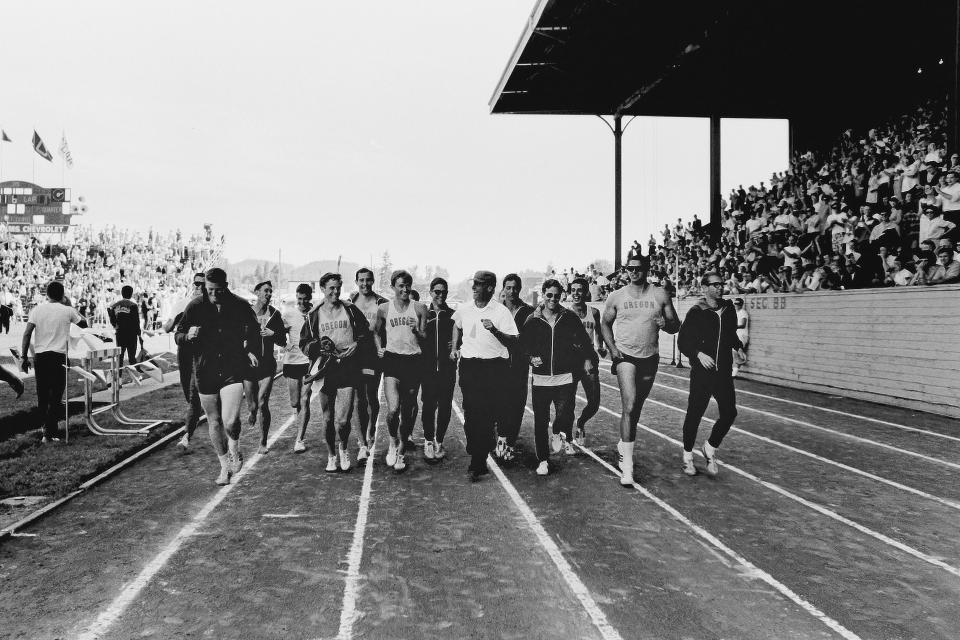
Bowerman’s teams, dubbed the Men of Oregon, won four NCAA team titles, 24 individual titles and had a dual-meet record of 114-20.
Among Bowerman’s many standout athletes were Dyrol Burleson, Roscoe Divine, Wade Bell, Jim Grelle, Otis Davis, as well as Knight, Bill Dellinger, who was Oregon's coach from 1973-98, and of course, Prefontaine, who came to Eugene from Coos Bay in 1969 and captivated the community.
Knight graduated from Oregon in 1959 and returned in the mid-1960s to team with Bowerman in the creation of Blue Ribbon Sports, which imported running shoes from Japan.
Bowerman’s constant pursuit of lighter and better footwear for his athletes eventually led to his development of a sole created from urethane poured into his wife's Belgian waffle iron.
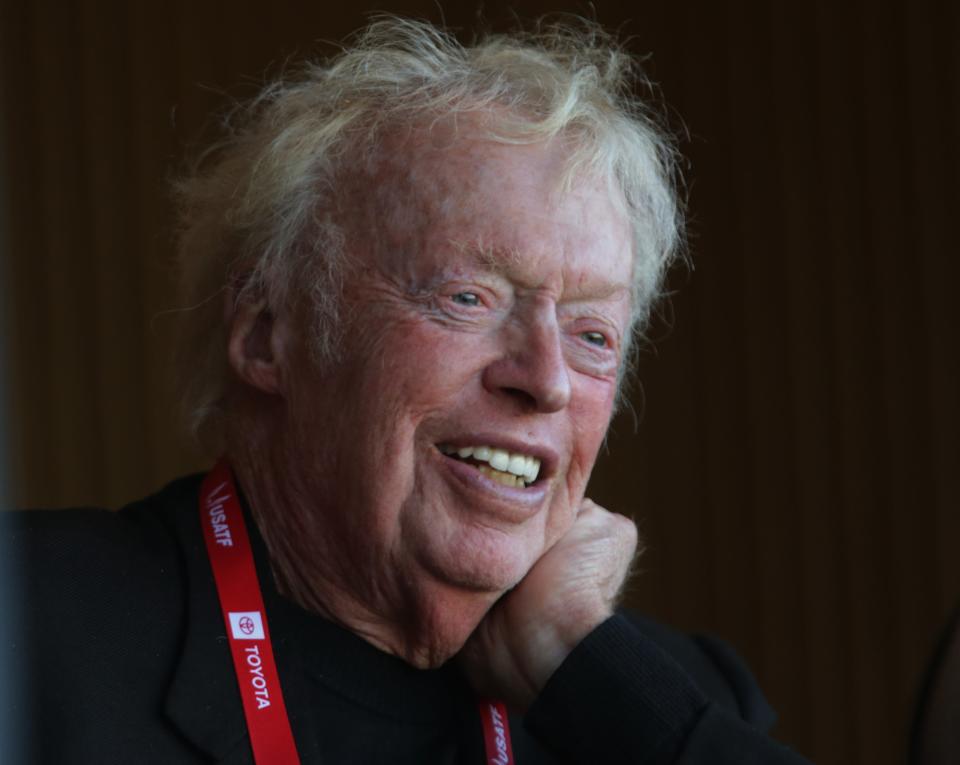
When Blue Ribbon Sports transitioned to Nike Inc., in 1971, Bowerman’s Waffle Trainers became the company’s signature shoe, with Prefontaine among the early endorsers when he wore them in 1972 at the first Olympic Trials meet held at Hayward Field.
Prefontaine, a seven-time NCAA champion and fourth-place finisher in the 5,000 at the Munich Olympics in 1972, died in 1975 at age 24 in a car crash on Eugene's Skyline Boulevard when he flipped his MGM convertible and was pinned underneath.
At the time of his death, he owned every American record from 2,000-10,000 meters.
His legacy lives on in many ways, but most prominently in the Pre Classic, a meet that has had Nike as its title sponsor since 1984.
"Without Nike, the Prefontaine Classic would not exist as more than a decent national meet,” Jordan said.
Oregon has also benefited from the financial support and influence of Knight, who along with his wife Penny fully funded the Hayward Field rebuild.
Also of significance to solidifying Eugene's track legacy was the hiring of Tom Heinonen in 1977 to be the Ducks’ first women’s track and field and cross-country coach. He led Oregon to its first three NCAA women’s titles and 14 individual champions before retiring in 2003. Two years later, after the resignation of coach Martin Smith, Lananna came to town.
Your neighbors are Olympians, elite athletes
Hayward Field has historically delivered when it comes to destination viewing for track and field.
The Olympic Trials in 2016 drew 176,972 fans and set a single-day attendance record of 22,944. At the 2012 Olympic Trials, that total was approximately 173,000.
While meets like the Olympic Trials and Pre Classic bring national recognition to Track Town, the Ducks are its backbone, as they've remained both popular with the fan base and consistently relevant in their pursuit of NCAA titles.
Oregon has won 32 national team championships in track and field and cross-country, starting with their first NCAA title outdoors in 1962 and their last NCAA title indoors in 2021.
The Ducks have had 138 track and field Olympians and 25 medalists, with their success peaking in Rio in 2016 when Ashton Eaton (decathlon), Matthew Centrowitz (men’s 1,500), Phyllis Francis (women’s 4x400) and English Gardner (women’s 4x100) won gold medals, and Brianne Theisen-Eaton (heptathlon) and Galen Rupp (men’s marathon) won bronze.
Attendance has been an issue since the gates reopened 16 months ago at Hayward Field, where permanent seating capacity increased from 8,500 to 12,650 with the remodel.
The 2021 meet schedule, which included the Olympic Trials, played out under strict capacity limitations inside the stadium due to the ongoing pandemic.
This season, however, there have been no such restrictions, though air travel, gas and lodging costs have skyrocketed in 2022, and a glut of home meets — including the Pac-12 championships, NCAA championships, Pre Classic and USATF Outdoor Championships all within in a six-week span — have contributed to keeping capacity crowds away from Hayward Field.
Total attendance at the USATF Outdoor Championships two weeks ago was just 13,306, an all-time low for that meet at Hayward Field.
But Oregon22 organizers expressed in April that ticket sales for the world championships have not been a concern. With the addition of temporary seating, capacity will be closer to 20,000 for the meet.
“The fact the World Indoors was a success, the World Juniors were a success, the fact the Prefontaine Classic has been ranked in the top three meets in the Diamond League for the past 10 years all show that we know track and field and that we can get things done," Jordan said.
With Hayward Field as a training ground for many elite athletes, over the years a strong professional training group scene developed in Eugene.
In the late 1970s, Bowerman, Knight and former Duck and original Nike employee Geoff Hollister created Athletics West, which had a roster through the years that included Alberto Salazar, Mary Decker Slaney, Joan Benoit Samuelson and Mac Wilkins.
Lananna then started the Oregon Track Club Elite in 2006, a group that has been home to the Eatons, Nick Symmonds, Andrew Wheating, Sally Kipyego, Francine Niyonsaba, Ben Blankenship and Hassan Mead.
“One of the things that I really think is unique to Eugene is the number of people who I think were high-level athletes at some point,” Dobson said. “For me, I feel like the fact that I was an Olympian is kind of a cool sidebar when I’m introducing myself in a professional environment, but instead of ‘Whoa! Really!’ it’s ‘Oh. Cool,’ because (in Eugene), lots of people were. And I think that’s far from devaluing it. I think it makes it obtainable and tangible for young people.”
Living up to the legacy: 'Kind of Mecca for runners'
Bowerman is credited with creating the jogging boom in the United States when he introduced the concept of running as a leisure activity in the 1960s, writing a three-page guide called "The Jogger's Manuel" and teaching a jogging class open to the community.
He also established the popular All Comers Meets in the 1950s. The meets that welcome all ages and all skill levels continue today, hosted by the Oregon Track Club and run by Jill Mestler, the meet director since 2004.
Held weekly during the summer, the meet’s ongoing popularity reflects a desire by athletes of all ages in the local community to participate in track and field in a serious — yet fun — manner.
“The All Comers are important for the youth, getting them excited about the sport, but there are also a lot of people 18-plus who are sticking with the sport,” Mestler said. “It’s keeping people engaged with track and field in general.”
Mestler, like her husband Rick and children Jackson, Caramia and Vincent, competed for the Ducks.
“I remember coming to track camp at Oregon when I was in high school and there was an All Comers Meet during the camp,” Mestler said.
“I was from a small town in Washington and I didn’t know any adults who ran or threw a shot put. That was just something that high school kids did. I thought 'This is so cool.' You don’t have to stop trying to be an athlete and trying for your own personal goals just because you got out of high school or college.”
When Dustin Pearce and his wife first visited Eugene in 2009, they were still living in Missouri and wanted to make a pilgrimage.
"We were aware of Eugene and the aura around it being a kind of Mecca for runners," Pearce said.
They both ran track and cross-country in high school and college. Pearce watched the Pre Classic on TV, one of the few major track events broadcast in primetime. They knew the names of the athletes who'd earned fame here.
So when they arrived, Pearce wasn't going to let any barrier stop him from setting foot on sacred ground.
"I convinced her to roll under the gates on Agate Street," Pearce said of his wife. "I wanted to do a mile on Hayward Field."
Running didn't much factor into their decision to move to Eugene in 2012, he said. They had vacationed in Oregon since their honeymoon so when it was time for a change of scenery, they already knew where they wanted to be.
Pearce taught at local high schools and coached cross-country for two years, but left that career in part because he was was looking for something he'd been surprised not to find in Eugene.
"When I moved to town, going to a track meet at Hayward Field lived up to every expectation. But participating at the community level as a runner was maybe harder than I expected," Pearce said. "One of the frustrations for me was — when we first moved to town — where's the running club, or the clubs you sign up for and participate in?"
A lifelong trend that began in Missouri for Pearce and his wife was running becoming the center of their social lives. Clubs and group runs were a big part of that, but running stores, like those he'd once worked in, had their part, too.
In 2014, Pearce opened Run Hub Northwest, in part to foster a more active local running community.
"That wasn't part of the original plan of moving out here," Pearce said. "I always tell people I assumed someone like the Prefontaine family or the Bowerman family would own a running store in town, not a teacher from Missouri."
'We almost take it for granted'
Eugene has its share of runners, but a fanatic doesn't require a Track Town legacy.
"There are really low barriers to entry: you just need a good pair of running shoes, and then the gym is outside your front door," said Rick Putnam, a runner, former Springfield police officer and a near lifelong area resident in his 60s.
Still young when Prefontaine ran the 5,000 in Munich, Putnam remembers watching him on TV. But football and baseball were his high school sports, and he didn't start running until he joined the police department.
"My brother and my father were my regular running partners. We went from running for fitness to doing some local 5Ks and 10Ks. At the end of the 80s, I did the Portland Marathon. I have basically been running ever since," he said.
There's space to run in Eugene, home to dozens of miles of shared-use paths and running trails.
Pre's Trail — first dreamed up by Prefontaine himself and built by the county with help from Bowerman and the Oregon Track Club — runs through Alton Baker Park as about four miles of bark-chip path with connecting loops.
The Ruth Bascom Riverbank Trail System, also known as the Willamette River Trail, is one of Eugene's most popular and accessible running paths, connecting the city and neighboring Springfield with 14 paved miles along the river.
The Ridgeline Trail system, a gravel path shared with hikers and bikers, is 14 miles and grants access to the Spencer Butte summit, as well as to the Fox Hollow trailhead and the one-mile Amazon Trail via the wood-chip Rexius Trail.
And if runners want to put their speed to the test, Eugene has its share of events: the Eugene Marathon, the Run to Stay Warm and the Butte to Butte, as well any number of other 5Ks and 10Ks, and many races in nearby areas.
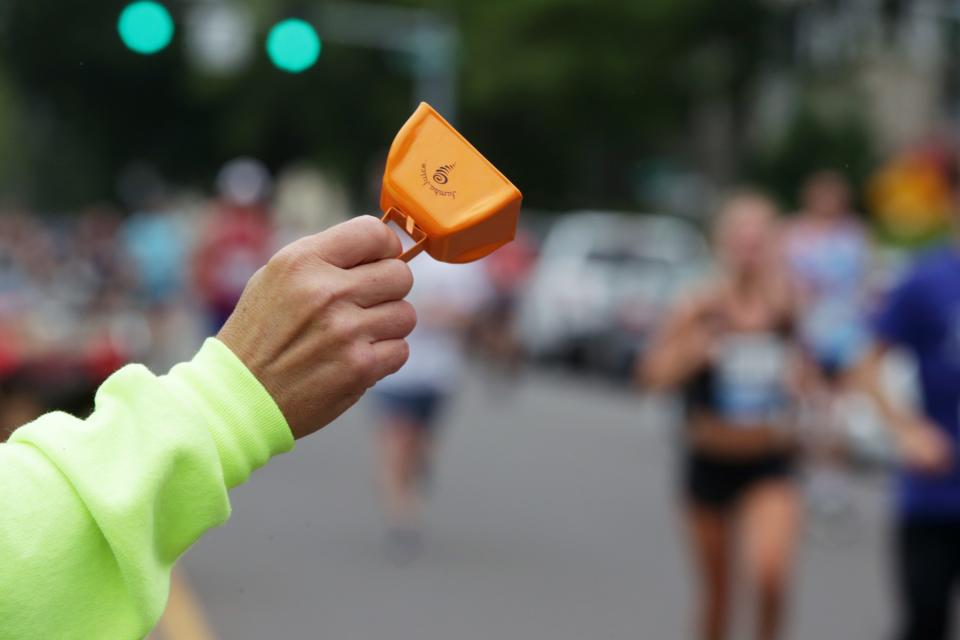
More:Eugene Marathon was gone but not forgotten as record number of runners will mark race's return
A running fanatic's identity is bound up in personal improvement, Putnam said. It doesn't start with "Track Town."
"For the people who live here, who are immersed in it, to some degree we almost take it for granted how cool that is because we see it every day," Putnam said. "Where you really get it brought up is from people from out of town."
Few bring up Track Town's legacy quite like Bob Coll, co-owner of Eugene Running Company and a local since 1993.
"Part of what we do at Eugene Running Company is share the heritage of Track Town, and that helps people become immersed in running culture," Coll said. "The shoes are almost incidental. The culture is why they come in. They are part of the tribe, and when they come in we recognize them as part of the tribe. We have that bond with people."
Coll has been a runner for nearly 50 years, but Laura Coll, his wife, has competed for Team USA 17 times in road races and cross-country championships and still was running professionally when they moved to Eugene. Bob Coll had taken a job based in Albany, but he decided to commute — there was no way they were going to live anywhere but Track Town.
"The first place we lived while our house was being built was Chase Village Apartments. The reason we picked that location on Martin Luther King Boulevard is because it was so close to Pre's Trail," Bob Coll said. "Regular people, your neighbors, your friends understand the sport. Running is unique in that it's both a sport at the highest level and for the kids in school, but it's also an activity for exercise and there's a social component. It's a lifetime activity."
Bob and Laura Coll, along with daughter Hailey Coll, spend their days with Eugene's running tribe. Their store sells running shoes, but every day they see where Eugene's running legacy meets its active participants and its rabid fans.
Laura Coll said she's seen interest in Eugene as a running destination ebb and flow over the years, but it always is at its height around big events such as the Olympics. Elite athletes come to train at world-class facilities, and Hayward Field — depending on whom you ask after its rebuild — is one of the most beloved venues for Eugene's many meets.
Track and field in Eugene, she said, is attractive to elites and novices alike.
"It's more pure. There's not nearly the money involved as with the NFL, NBA and those kind of sports. And it's hard. It's a lot harder than a lot of those sports to get to that level," Laura Coll said. "Anyone from a little kid to an 80-year-old can do it because they can find their niche. We get old people out there throwing the hammer and the javelin. We get little ones running the 100-meter dash or the Diaper Dash at the Oregon Track Club All Comers' Meets."
Pearce sees the Track Town legacy, from Prefontaine to Nike, from Hayward Field to the World Athletics Championships, as elements that bring excitement to track as a local sport. It's up to local runners to translate that energy into their daily lives.
"Those are the ingredients that make it Track Town USA, but you have to put it in the oven and bake it," Pearce said. "A lot of those things aren't directly connected to the community at large. For me, that's where Run Hub comes in."
Run Hub Northwest and Eugene Running Company are both doing their part. The running stores are community hubs, sponsoring weekly community running groups, marathon training and resources about upcoming local races.
"I want to connect that upper-level energy of Hayward and the Nike story so when people come to town, they see there's not only these great events and history, but also a really robust, vibrant running community," Pearce said.
On Monday nights, Putnam is usually leading Eugene Running Company's community runs on Pre's Trail. No matter their skill level, Putnam said, all are welcome to take the first steps in transforming from some who runs into a runner.
"It slowly becomes part of who you are," Putnam said. "These are the same things that, in the mid-70s, Prefontaine was doing and the Men of Oregon. It does kind of become part of who you are. If I moved and lived in Boise, I'd still be who I am but you're still disjointed from the history of this community and the culture around this community."
Track Town's legacy belongs to anyone who finds in themselves what runners of the past found at Hayward Field.
"I don't know, statistically, if there are more people who run, novice runners, in Eugene than in Portland or Salem, but there's this underlying sense of pride you live in Track Town," he said. "You're perpetuating the myth."
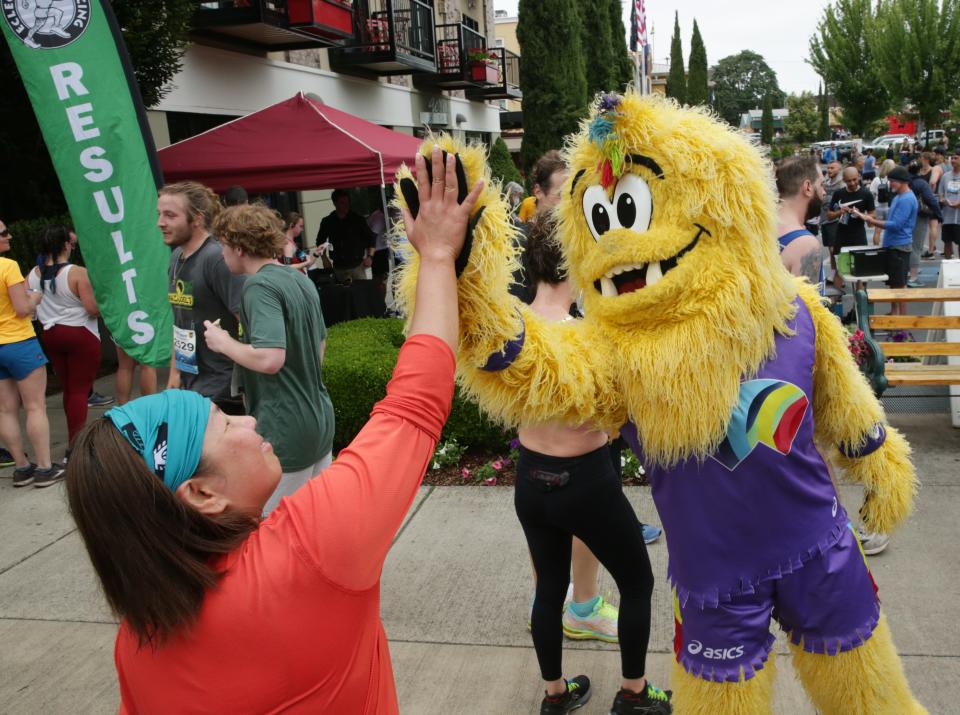
Contact reporter Adam Duvernay at aduvernay@registerguard.com. Follow on Twitter @DuvernayOR. Follow Chris Hansen on Twitter @chansen_RG or email at chansen@registerguard.com.
This article originally appeared on Register-Guard: World Athletics Championships: How Eugene's history secured Oregon22

